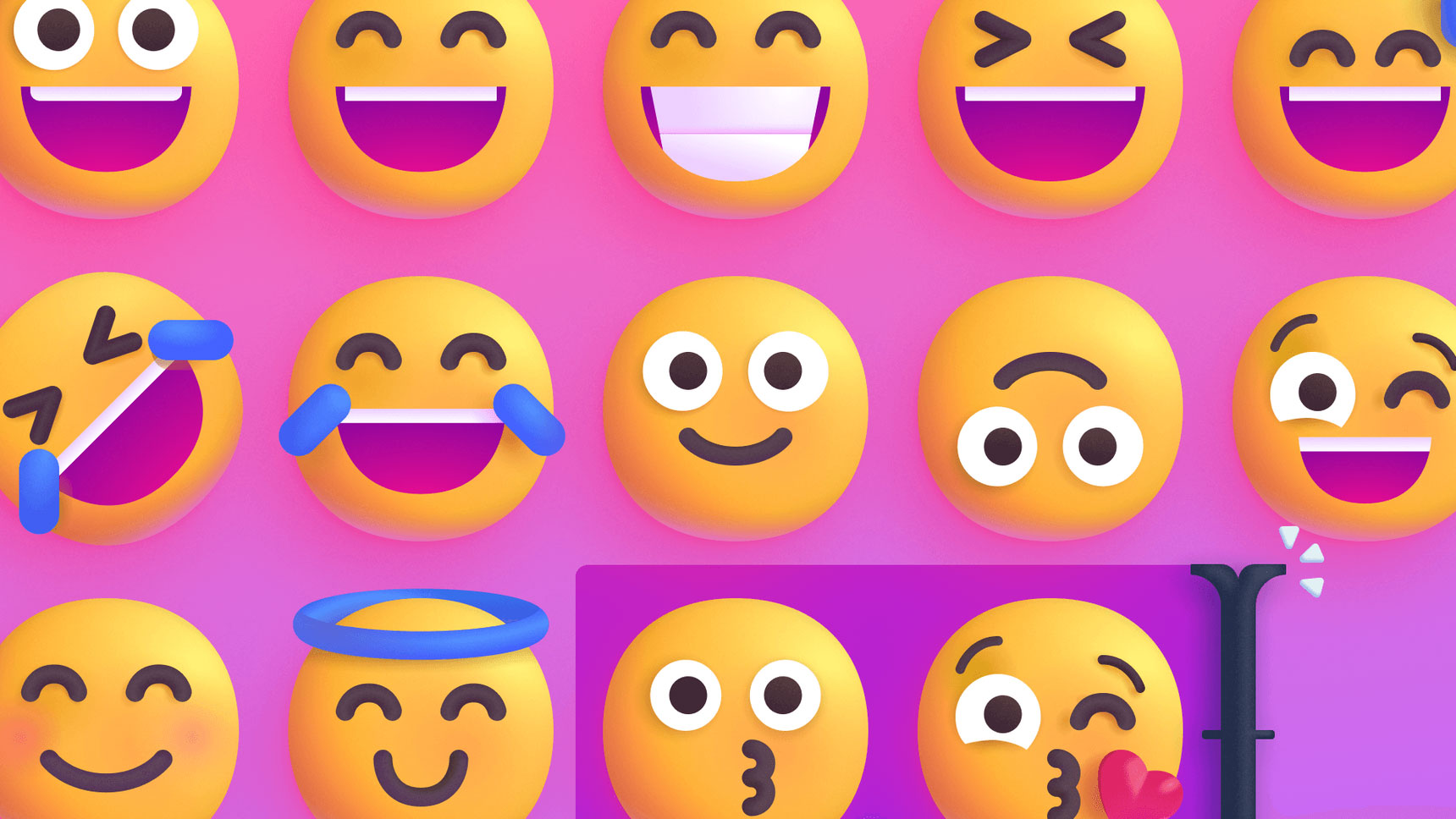An emoji for your thoughts
Why we refreshed our 1800+ emoji to support the new landscape of work
The world has changed quite a bit since ¯\(ツ)/¯ became 🤷 .
Mobile devices proliferated, the gig economy burgeoned, and remote work began to rise. Then the pandemic hit and beyond our heroic essential workers, almost everyone became a remote worker.
The emoji has steadily evolved alongside us, acting as essential communicators full of life and color. Body language, subtle forms of humor, or environmental conditions — while we can see and respond to those cues those in-person, the loss of them in digital contexts impacts our communication greatly. With emoji, however, a few pixels can telegraph our thoughts and feelings in ways that are fun, clear, and emotionally resonant.
As the world moves toward hybrid work scenarios that blend in-person with remote, expressive forms of digital communication are more important than ever. Over 1,800 emoji exist within Microsoft 365, and we’ve been working for the past year to dramatically refresh them by creating a system that is innately Fluent.
We opted for 3D designs over 2D and chose to animate the majority of our emoji. While you’ll see these roll out in product over the coming months, we wanted to share a sneak peek with you in honor of World Emoji Day. We’re also excited to unveil five brand-new emoji that signal our fresh perspective on work, expression, and the spaces in between.
Embracing the power of play
Even before the pandemic obscured the lines between work and life, notions of professionalism had been evolving toward emotional honesty and playfulness. To ensure our new designs reflected this, design researcher Meghan Stockdale worked closely with us to rethink graphical expressions of professionalism. Through primary and secondary research, she focused on the concept of play as a catalyst for tapping into our best work and most honest selves. She cites Stuart Brown’s wonderful book, Play: How it Shapes the Brain, Opens the Imagination, and Invigorates the Soul, as a particular influence for her.
“Play is vital for things like creative brainstorming, developing and mastering new skills, and team building, ” says Meghan, “but we haven’t typically been open to giving play a place at work or in our work tools. Because of our associations with work and adulthood, play can at times make some people uncomfortable — even though we’re fundamentally built for it. ”
Because being playful or highly expressive doesn’t come easily to everyone, emoji are the perfect little helpers. Far from being frivolous or ornamental, they’re extensions of our own humanity and an important communication tool. According to Meghan’s research, they can soften or intensify our tone, add a sense of fun and playfulness to otherwise mundane interactions, and help us express ourselves in a way that’s more universal than the written word.
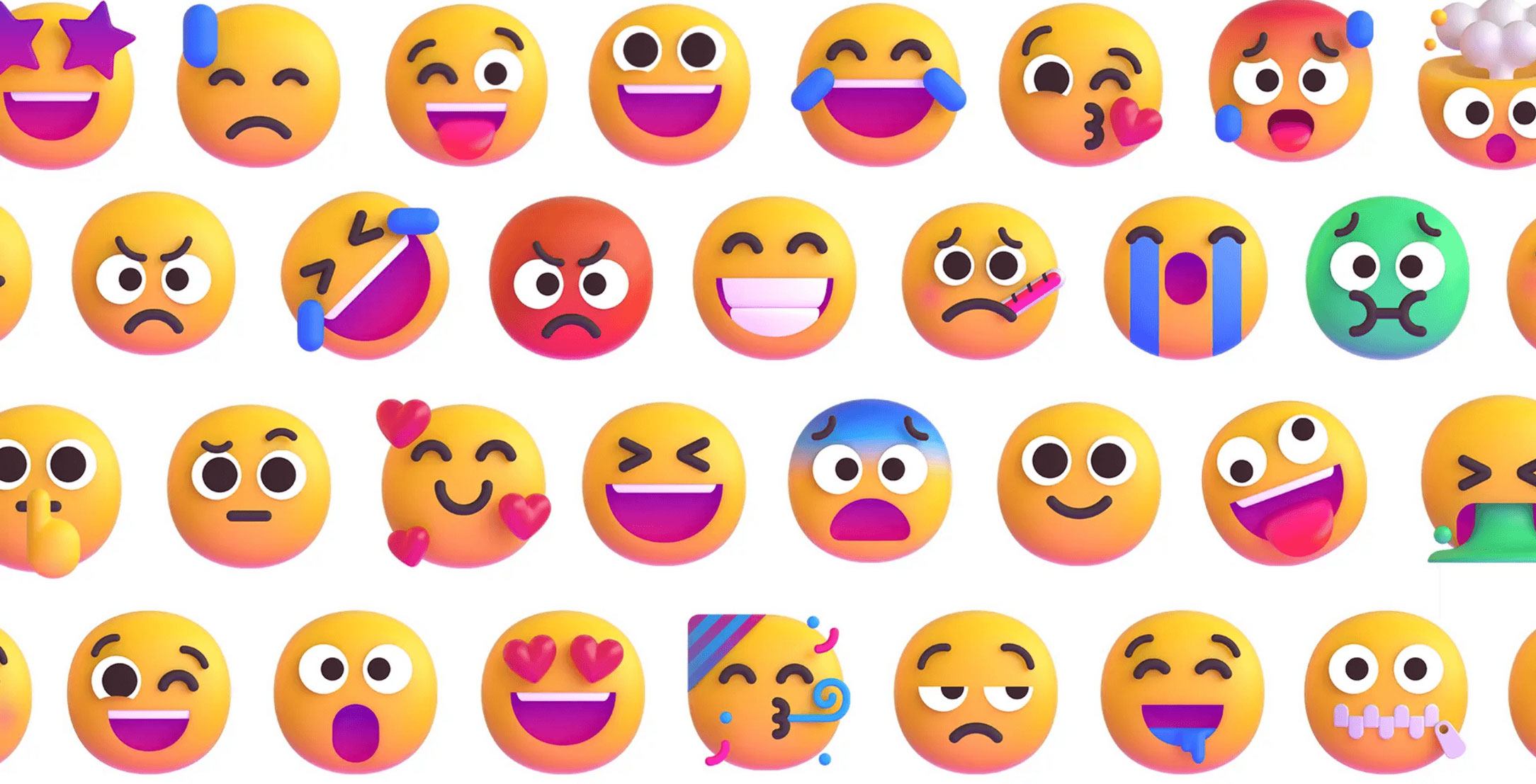
So, are emoji or other playful media appropriate for work communications? Play encourages innovation, and emoji are playful communicators. Maybe the interplay between text and emoji strengthens the communicative power of both. Maybe the vulnerability or levity of emoji can not only open up our own creativity but also encourage space and agency for others in our organization. This is especially relevant as we head further into a hybrid-work world where we meet new team members for the first time online.
Some of our brand new emoji even seek to capture this new hybrid world. Below are some concept sketches that we’d love to get your thoughts on.

Innately fun, innately Fluent
Trust and clarity were guiding principles for us throughout this process. We wanted people to trust that our new emoji style would recognize their intentions and reflect their humanity. People aren’t perfect, and there is beauty in our originality, which is why we chose an imperfect circle to be the silhouette shape for a head.
We also paid close attention to the expression in the eyes on our emoji and leaned into pronounced eyebrow expressions. It was critical for us to preserve the intent of the emotion while putting our design spin on them. Finally, because we want people to trust that they’ll be engaging with uplifting and inspiring designs, we leaned into bright, saturated colors and bold forms!
To keep consistency across 1,888 emoji in various categories, we used simple geometric forms as the basis for each emoji in our new style. (If this sounds familiar, it’s because our connected icon system works the same way. ) The octopus emoji really highlights this; instead of a more anatomical representation, we constructed it from circles and semicircles to give it more personality.
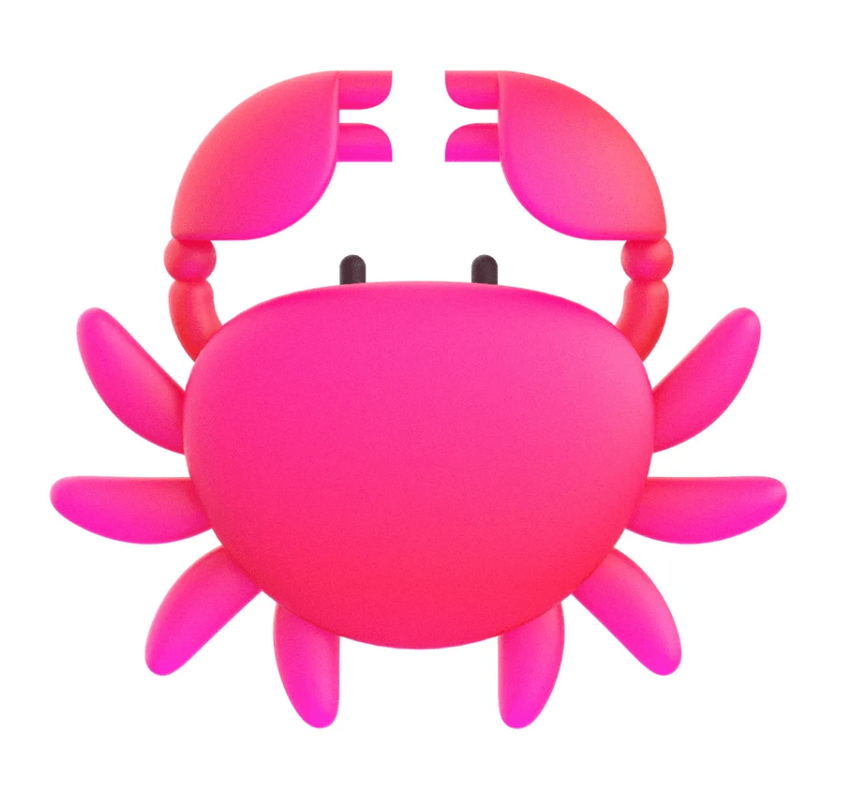
Maybe it’s the Pacific Northwest in me, but my favorite is the crab. From the graphic, chunky shape of the claws to the little circle joints all the way to the spectacularly vibrant color, this cool little crab exemplifies what I love about our emoji system: it makes even the seemingly ordinary emoji extraordinary. Crab or human, there’s beauty in our originality.
Last, but not least, we had to use this opportunity to make a change that only we could truly make — so long flat, standard paperclip, and hello Clippy!
Sure, we may use fewer paper clips today than we did in Clippy’s heyday, but we couldn’t resist the nostalgic pull.

Emoji are solidifying their role as integral communication tools in our online spaces, and you’ll be able to use each of these refreshed and new emoji across platforms and devices. Some of our new emoji are live in Flipgrid starting today, with the rest of them rolling out in the coming weeks. The set will come to Teams and Windows* this holiday season, with Yammer, Outlook, and more lighting up throughout 2022. New emoji in Windows will be available in Windows 11 and in 2D.
Beyond emoji, we’re bringing our Fluent aesthetic to life within Microsoft 365 via more expressive themes, illustrations, backgrounds, and more. But first, we’d love to hear from you! What are some of your favorite emoji, and what new emoji would you create if you could be an emoji designer for a day?
*Updated 11/22/2021: This blog was updated to clarify that the new emoji style is only available in Windows 11 and is 2D. We still offer an assortment of emojis for Windows 10 customers.
An amazing group of emojiologists came together to make this happen. Special thanks to Cassie Klingler, Claire Anderson, Jason Custer, Judy Safran-Aasen, Leslie Pasceri, Mike Lajoie, Nando Costa, Sam Cundall, Spencer Nelson, Tanel Vari, and the fine folks at Studio Tendril.
We ❤️ you.
Read more
To stay in the know with Microsoft Design, follow us on Twitter and Instagram, or join our Windows or Office Insider program. And if you are interested in working with us at Microsoft, head over to aka.ms/DesignCareers.
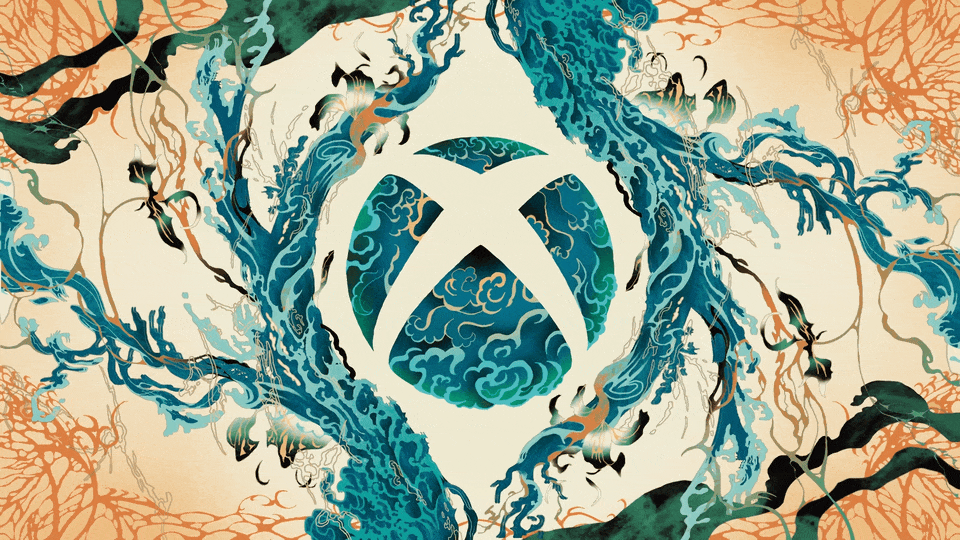
A canvas of community narratives
Xbox celebrates a year of visual storytelling by launching new dynamic backgrounds
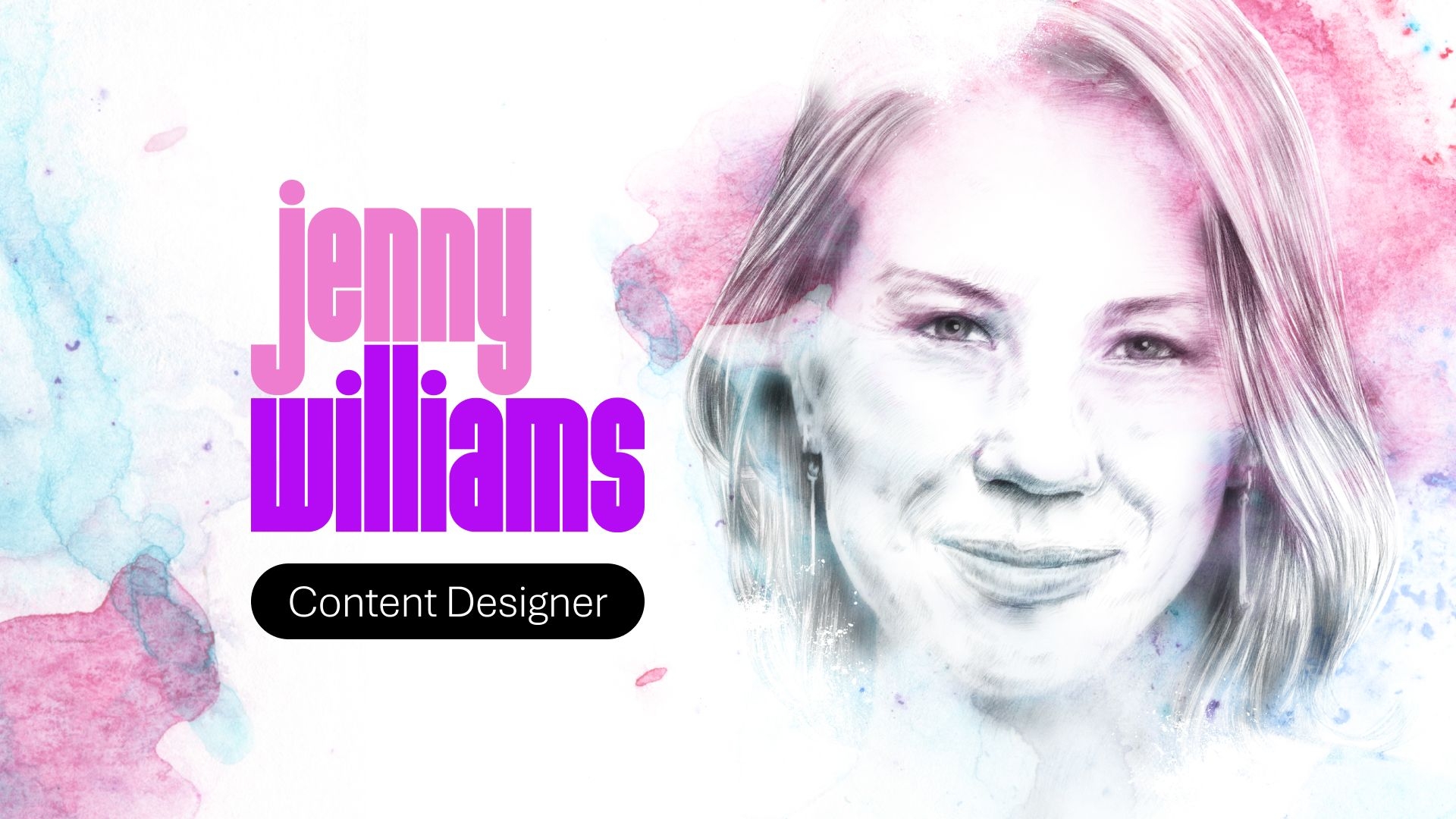
In the age of AI, will content designers become extinct?
Senior Content Designer Jenny Williams talks about her role, and working with AI
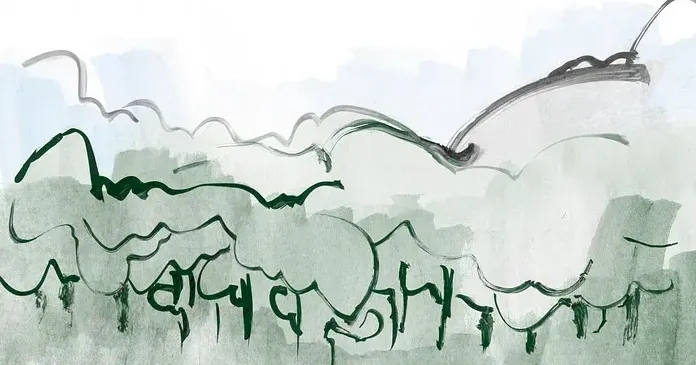
Leave no trace
How product designers can break from the status quo and help our planet

